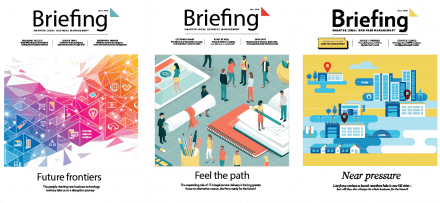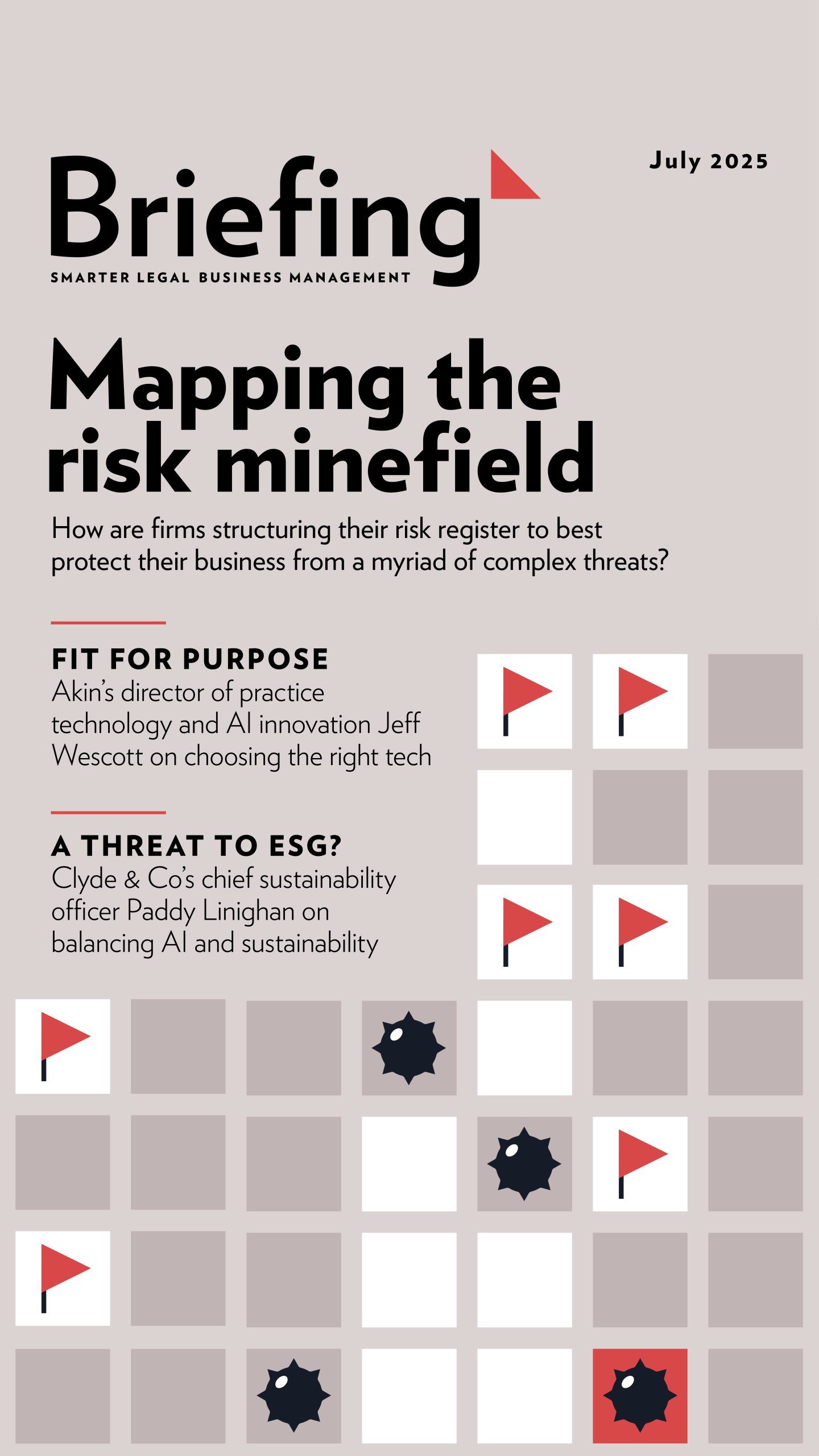are law firms on top of hybrid-working challenges? Legal IT experts discuss a cloud-based culture
Dawn Ingle, IS director, Shoosmiths|
Anthony Stables, CIO, Forsters|
Mike Creffield, business manager, NetDocumentsnt for professional services, Salesforce|
How can law firms adapt to the cultural, security and collaboration challenges of working in a hybrid environment? Are legal businesses truly leveraging the advantages of cloud technologies? And how can legal leaders push ahead with technological transformation while staying in lockstep with their organisation’s cultural status quo?
These are some of the questions Briefing attempted to answer in our latest webcast: The platform for a more collaborative and secure law firm culture.
Watch on to hear our expert panel answer questions around these topics and discuss the road ahead for the use of cloud-based legaltech:
- Richard Brent, head of content, Briefing
- Dawn Ingle, IS director, Shoosmiths
- Anthony Stables, CIO, Forsters
- Mike Creffield, business manager, NetDocuments
New hybrid horizons
To begin, Stables contributed an overview of the recent tech transformation project at Forsters, ‘Project Apollo’, including the management of documents, a broad change of tech systems undertaken from 2018 onwards. Part of the rationale for this and other transformations was the need to drive on with agile working methods, he added, and a change of practice management system – a huge challenge for the firm.
Further changes included implementation of NetDocuments, making it possible to search pdfs, track use of documents, and the linking of documents and matters to one another as well as financial information and audit logs.
Having a more accessible, “omni-channel” approach to information and technology is one area Stables added into the mix, and one which Ingle at Shoosmiths echoed. She also discussed the challenges around law firm culture and people expectations, as well as capturing ‘watercooler conversations’. Facilitating those information exchanges is likely to take place on MS Teams open channels – though getting people talking face-to-face is a major part of the wellbeing and cultural values of the firm, she said, and WFH productivity burnout – including getting away from Teams where possible – is an issue IT perhaps will struggle to solve alone.
Both surfaced points around wellbeing issues and facilitating hybrid working on a human level, including Stables’ exhortation to avoid hybrid training calls at almost all costs.
Hear more hybrid-working insights in the full webcast recording
Want to watch the video on YouTube? Click here.
KNOWLEDGE AND IT LEGAL LEADERS DISCUSS DOCUMENT MANAGEMENT CHALLENGES IN A REMOTE WORKING WORLD
Alison Devlin, head of knowledge, Eversheds Sutherland |
John Hunter, chief information officer, Council of Europe|
Simon Ferres, CIO for legal, Deutsche Bank |
Dan Hauck, chief product officer, NetDocuments|
As law firms are set to shortly have their hybrid working models tested out in practice, can their people access and work on documents as effectively as they should? Do they have the tools needed to ensure client service is still a top priority, even when remote? And how do firms factor the risks associated with sensitive information into a world of remote document management?
These are the questions our panel of legal document management and knowledge experts aimed to tackle in Briefing’s latest webcast: How to transform remote collaboration. With three legal leaders from three very different organisations all having completed or facing document management system (DMS) migrations, and all facing similar challenges, we heard how each was tackling the task of balancing access to documents against the risks of losing control over content. Chaired by Richard Brent, editor-in-chief of Briefing, our speakers were:
- Alison Devlin, head of knowledge, Eversheds Sutherland
- John Hunter, chief information officer, Council of Europe
- Simon Ferres, CIO for legal, Deutsche Bank
- Dan Hauck, chief product officer, NetDocuments
Documenting collaboration
Kicking off, we heard how John Hunter at the Council of Europe realised the organisation’s IT strategy needed an efficiency revamp. Working with over 10,000 external parties, however, access and security were a high priority. In order to migrate its 35m documents from shared drives and public folders to a single platform, Hunter explained the organisation had to develop a strong change management process.
That’s an issue also highlighted by Simon Ferres at Deutsche Bank, who said much of the migration to DMS provider NetDocuments has included a “carrot and stick approach”. In terms of lessons learned so far from rolling out a new DMS, he said it’s been important to keep an open mind and put the time in to get the most out of the IT investment: “When it comes to decision-making in the design phase, don’t just accept the status quo. You may not make back your ROI if you don’t challenge it.”
Command and control
Aside from also having a new DMS on the horizon, at Eversheds Sutherland, Alison Devlin outlined a Teams-based initiative executed at the firm to create new content in support of regulatory horizon scanning for the financial services practice. MS Teams channels supported a global approach to frictionless sharing and collaboration on that issue, though she acknowledged the challenge this approach poses to the idea of a single source of truth – an issue being grappled with across many organisations.
So, how to tackle the issue of controlling content in this new world? That risk is something John Hunter is also looking at, with a keen eye on use of collaboration tools like Teams, which, if unchecked, could be akin to “opening up the Wild West” when it comes to keeping a rein on documents and knowledge. That’s why collaboration spaces and tools that retain data and communications transparently are so useful, he added.
The need to bring together content and invite people into a single platform to get the benefit of a collaborative approach – while retaining control – is a common theme across many firms, said Dan Hauck. That approach necessarily includes keeping an eye on integration with related tools like Teams, he said, for which tech providers like NetDocuments have a large role to play.
Learn more about where each of our speakers is on the remote document collaboration journey, how they’re tackling emerging challenges and what solutions they recommend to solve common issues, plus hear answers to audience questions, by watching the full video.
Want to watch the video on YouTube? Click here.







